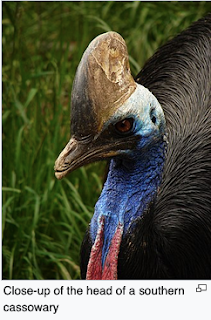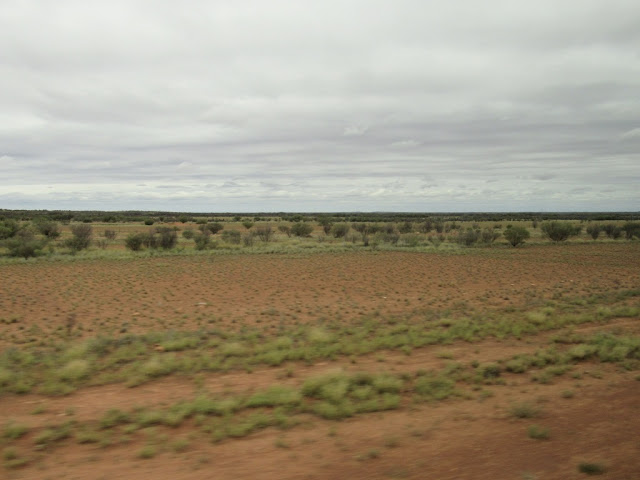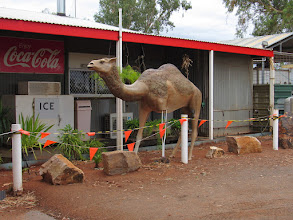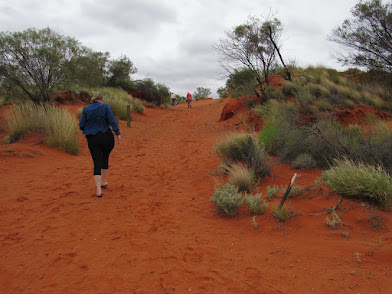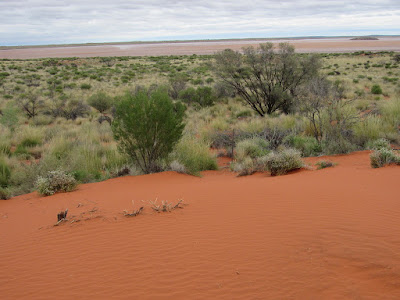After a few days in the Red Center, we flew to Cairns in northeastern Australia where we would find a tropical paradise, the Great Barrier Reef, and the Daintree Rain Forest.
It seems that the humidity here affected my camera, as well as my watch and my alarm clock. They just stopped! So I'm depending on the photos of several people in my group that were shared on WhatsApp. Many thanks to everyone!!
The Great Barrier Reef
We spent the day on a catamaran that took us to the Great Barrier Reef, which is located in the Coral Sea. The crew was amazing in its organization and service. We had a super buffet lunch with a choice of grilled steak, chicken, and prawns along with a variety of salads.
To see the reef, you must go "down under" either through snorkeling or with air tanks and a wet suit. The crew cast a net around the snorkeling area, which guided swimmers from getting too far away from the boat. The ship's crew provided elaborate instructions for snorkelers to follow, including hand signals to keep them safe in the sea. Snorkelers jumped into the water from the stern of the boat and proceeded to view the amazing sights of the reef below.

The Great Barrier Reef is the world's largest coral reef system composed of over 2,900 individual reefs
and 900 islands stretching for over 1,400 miles over an
area of approximately 133,000 sq miles. The reef is today experiencing the danger of bleaching the coral, which makes it white.
Daintree Rain Forest
 The Daintree rain forest is about 460 square miles and part of a continuous area of tropical rain forest in Australia. It is the oldest continually-surviving rain forest on Earth and it is English broadcaster, biologist, natural historian, and author David Attenborough's favorite place in all the natural world.
The Daintree rain forest is about 460 square miles and part of a continuous area of tropical rain forest in Australia. It is the oldest continually-surviving rain forest on Earth and it is English broadcaster, biologist, natural historian, and author David Attenborough's favorite place in all the natural world.
The rain forest was once a vast forest that covered the entire Australian continent. It has survived 120 million years of climate change, which has reduced the forest to few remaining areas of the continent. It is named after Richard Daintree, an Australian geologist and photographer (1832–1878).
Cassowaries have three-toed feet with sharp claws. The second toe sports a dagger-like claw that may be 5 inches long and is dangerous since cassowaries sometimes kick humans and other animals
with their powerful legs. Cassowaries can run at up to 30 mph
through the dense forest and can jump up almost 5 feet high. They
are good swimmers and can cross wide rivers and swim in the sea.
Here is a cassowary walking across the rain forest. How lucky we were for Moshe to capture it for us on film. The male can be six-feet tall while the female can stand at four-feet. The bird eats seeds and fruit whole and then deposits them on the forest floor where they grow. The cassowary is almost single-handedly responsible for keeping the rain forest going.
Cassowaries have a skin-covered casque on top of their heads that grows with age. Scientists are unsure of its purpose. They suggest it is a weapon against others, a clearing tool for foraging, a secondary sexual characteristic, and an amplifier of sound.
Cassowaries live 40-50 years.
We look like quite the explorers as we wade through the rain forest's trees and bushes.
Our guide has lived in this part of the forest for over 25 years. She knew the stories of the forest from a biological point of view. She was clearly a friend of the forest as she knew every spider web, every tree, and every animal that walked, crawled, or flew through it. She and her husband were married in the forest, and they own the property. When they give it up, it will become a public land of the government.
 We pose for another group photo, this time in the tropics. We have covered a lot of ground together in Australia: cities, deserts, green areas, and now the tropics.
We pose for another group photo, this time in the tropics. We have covered a lot of ground together in Australia: cities, deserts, green areas, and now the tropics.


This fellow who may have played roles in monster films at one time gave us a thrill to see him in his natural environment. He froze long enough for us to take a photo and endeared himself to us. Not a scary creature at all!

Tree roots in the rain forest are exposed because the topsoil is shallow. Tree tops take other interesting forms.

We stopped for some rain forest ice cream. It wasn't Ben & Jerry's but rather authentic fruits from the rain forest made into some delicious and very tasty ice cream. Many thanks to Callum, our guide, for the treat!! We received three scoops of three different flavors. We also had a healthy vegetarian lunch in the rain forest.

Products of the rain forest. A farmer's market provides some of the fruits of the forest while an industrial farm grows sugar cane.
Peppers Beach Club

It's important to swim only inside the lines, which are nets that are anchored to the bottom. They keep the crocodiles and sharks out, which can eat you.
If you don't want to take a chance with the crocs and sharks, a huge outdoor pool in the hotel's courtyard is available.

Palm Cove gives you a tropical paradise experience. Even the hotel rooms provide all the comforts of home and more with a hot tub, overhead fan, and balcony that looks out to the courtyard's gardens. A few of us found massage parlors for this refreshing and oily luxury.

The hot tub was nice and hot, but proved a challenge in getting in and out. I had to crawl! Then I overdid it with the bubble bath by using a whole tube. After the water drained, the bubbles remained the next day.
Unseen critters surrounded our hotel and provided a 24-hour chorus of song. This video captures a bit of the concert.
Rattle n Hum Bar & Grill
We ate some delicious dinners at the hotel but also had opportunities to eat on our own. One of my favorite restaurants was this pub, Rattle n Hum just down the street from the hotel. I ordered two Australian pub favorites: chicken parmigiana one night and pizza on another.
Our four-night tropical excursion ended in the morning with a sumptuous boxed breakfast for our three-hour flight south to Sydney for some more urban adventures.
Resources
https://en.wikipedia.org/wiki/Daintree_Rainforest
https://en.wikipedia.org/wiki/Cassowary
https://en.wikipedia.org/wiki/Great_Barrier_Reef











